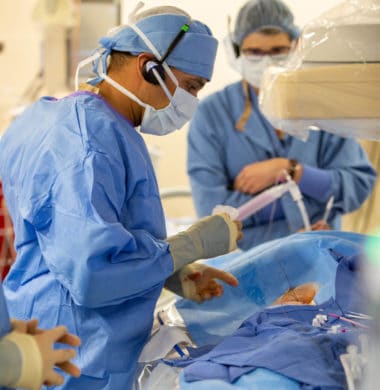Action plan after your local Cardiologist visit
Action plan after your local Cardiologist visit
Blog Article
Understanding the Value of Cardiology in Modern Medical Care Services
Cardiology plays a vital duty in modern-day health care, especially as heart disease remains to be the leading source of death worldwide. Advances in diagnostics and treatment have transformed client treatment, making it possible for earlier treatments and improved results. In addition, the change towards preventive cardiology equips people to handle their health proactively. As modern technology remains to evolve, the integration of cutting-edge solutions might additionally redefine cardiology's effect on public health, triggering a more detailed examination of emerging patterns and their ramifications.
The Occurrence of Heart Illness and Its Effect On Public Wellness
Heart condition stays the leading cause of fatality internationally, its impact expands far beyond specific patients to influence public health systems and economic situations. The high prevalence of cardiovascular disease puts a considerable strain on medical care resources, necessitating enhanced financing for recovery, treatment, and prevention programs. Public wellness efforts must attend to threat elements such as obesity, cigarette smoking, and sedentary way of lives, which add significantly to the climbing incidence of heart conditions.Moreover, the economic worry connected with heart problem is enormous, incorporating not only direct clinical costs yet likewise indirect expenses connected to lost productivity and early mortality. Communities encounter difficulties in taking care of these expenses, typically bring about disparities in medical care gain access to and results. As the populace ages and lifestyle-related risks continue to intensify, the necessity for reliable cardiology treatments comes to be paramount. Addressing heart disease is not only a matter of individual health yet additionally a critical public health and wellness concern.
Developments in Heart Diagnostics and Imaging Techniques
Current innovations in heart diagnostics and imaging techniques have actually changed the field of cardiology, boosting the ability to detect and monitor cardiovascular disease. Strategies such as heart MRI, CT angiography, and echocardiography have become significantly innovative, supplying comprehensive photos of heart frameworks and functions. These methods permit the early recognition of problems like coronary artery illness, heart failure, and valvular disorders.Moreover, innovations in non-invasive diagnostics, such as wearable innovation and remote tracking tools, have actually empowered people and health care carriers. These tools facilitate real-time monitoring of heart rhythms and other crucial indicators, resulting in prompt interventions. In addition, expert system is being integrated right into imaging evaluation, boosting precision and efficiency in medical diagnosis.
Technologies in Therapy Choices for Heart Conditions
Current improvements in cardiology have led to substantial advancements in treatment alternatives for heart disease. These consist of advanced medical techniques that improve step-by-step results and arising drugs that use new methods for treatment. As the field evolves, these advancements play an important duty in boosting client care and outcomes.
Advanced Surgical Techniques
Technologies in medical methods have actually transformed the landscape of cardiology, using new expect patients with heart conditions. Minimally intrusive procedures, such as catheter-based treatments, have actually significantly lowered healing times and medical facility keeps. Techniques like robotic-assisted surgical procedure enhance accuracy, enabling doctors to browse intricate physiological structures with greater precision. Improvements in imaging modern technology facilitate real-time visualization during procedures, improving results. Transcatheter aortic valve substitute (TAVR) exhibits an innovation in dealing with aortic constriction, allowing valve replacement without open-heart surgical treatment. Furthermore, hybrid techniques that integrate catheter-based and surgical approaches give customized solutions for numerous heart concerns. These innovative surgical techniques not just boost individual safety and security yet additionally broaden treatment options, underscoring the vital function of advancement in contemporary cardiology methods.
Emerging Medications and Treatments
As the landscape of cardiology continues to progress, emerging medications and therapies play a critical duty in boosting treatment alternatives for heart conditions. Technologies such as novel anticoagulants and advanced lipid-lowering agents have changed the management of cardio conditions, significantly minimizing person morbidity and mortality. In addition, the development of genetics treatments and regenerative medication supplies promising opportunities for dealing with problems previously considered irreversible. Scientific trials are continually disclosing the effectiveness of these therapies, pushing the boundaries of traditional treatments. Moreover, the assimilation of electronic health technologies helps with customized medicine, permitting for tailored therapy plans based on genetic and lifestyle aspects. Jointly, these developments underscore the vibrant nature of cardiology, enhancing patient end results and redefining requirements of care in modern-day medical care.
The Function of Preventive Cardiology in Client Treatment
Preventive cardiology plays an important function in patient care by concentrating on the recognition of risk elements that contribute to heart problem. With way of life adjustment approaches and very early discovery methods, doctor can efficiently decrease the incidence of cardiovascular events - Cardiology. This aggressive strategy not just boosts person end results but also advertises lasting health
Risk Factor Identification
While cardiovascular conditions continue to be a leading source of morbidity and mortality worldwide, reliable risk factor recognition offers as a keystone of preventative cardiology. Recognizing danger aspects such as hypertension, diabetes, family, and hyperlipidemia history is vital for early intervention. Healthcare professionals utilize various evaluating approaches to examine these aspects, enabling tailored safety nets. Furthermore, understanding a patient's way of living options, such as smoking and physical inactivity, further educates danger assessments. This thorough analysis allows clinicians to create tailored treatment plans targeted at mitigating risks. By focusing on risk aspect identification, medical care systems can improve patient end results and decrease the total problem of cardio illness, ultimately adding to improved public wellness techniques and source allotment.
Way Of Living Adjustment Techniques
A plethora of research studies highlights the vital role of way of living modification techniques in reducing heart disease risk. These methods encompass nutritional modifications, enhanced exercise, cigarette smoking cessation, and weight management. By embracing a heart-healthy diet regimen rich in fruits, veggies, whole grains, and lean healthy proteins, people can decrease cholesterol levels and blood stress. Regular physical activity enhances the heart and enhances general cardio health and wellness. In addition, quitting cigarette smoking greatly minimizes the threat of cardiovascular disease and boosts recuperation prices for those with current conditions. Weight administration even more adds to cardiovascular health by mitigating various other threat factors such as diabetes and hypertension. Implementing these lifestyle transforms not just advertises private well-being but also acts as a cornerstone of precautionary cardiology in client care.
Early Discovery Techniques
Way of life alterations greatly add to minimizing heart disease dangers, yet they are most effective when combined with very early detection strategies. Precautionary cardiology stresses the importance of identifying prospective heart issues prior to they rise into severe problems. Methods such as blood stress monitoring, cholesterol testing, and progressed imaging technologies like echocardiograms play crucial functions in assessing cardiovascular wellness. Biomarkers and hereditary screening likewise improve the accuracy of early discovery, permitting for customized preventive strategies. Routine cardiac threat analyses equip doctor to intervene proactively, possibly stopping cardiac arrest and strokes (Cardiologist near me). By integrating these early detection methods why not try here right into routine care, people can benefit from prompt way of life interventions and targeted treatments, inevitably enhancing results and enhancing lifestyle
Integrating Innovation Into Cardiology Practices
As improvements in technology remain to improve various areas, the assimilation of ingenious tools and systems right into cardiology techniques has actually ended up being crucial for boosting client treatment and outcomes. Telemedicine systems allow cardiologists to keep an eye on clients remotely, boosting access to care while lowering the worry on medical care centers. Wearable gadgets, such as smartwatches, enable continuous heart rate monitoring, informing both clients and medical professionals to possible problems in real-time. Furthermore, expert system (AI) is being used to evaluate large amounts of heart data, assisting in early medical diagnosis and customized treatment plans. Advanced imaging strategies, consisting of 3D echocardiography, boost visualization of heart structures, causing a lot more exact treatments. Electronic health records (EHRs) streamline person details monitoring, making certain that cardiologists have prompt access to essential information. With each other, these technical advancements are changing cardiology, advertising aggressive management and improved health results for people with cardio conditions.
The Significance of Patient Education And Learning and Involvement
Client education and engagement play a critical role in the monitoring of cardiovascular health. By equipping people with understanding about their conditions, therapy choices, and lifestyle changes, doctor empower individuals to take an energetic duty in their treatment. This aggressive strategy can bring about improved adherence to suggested drugs, nutritional adjustments, and exercise programs, eventually reducing the threat of complications.Engagement likewise promotes a strong patient-provider partnership, encouraging open interaction and depend on. When clients feel educated and included, they are most likely to voice concerns and ask inquiries, which can bring about much better medical end results. Furthermore, academic resources, such as workshops or electronic platforms, can boost understanding and promote self-management strategies. In general, focusing on patient education and learning and engagement is crucial for improving cardio health and wellness, boosting lifestyle, and lowering healthcare prices connected with heart diseases.
Future Patterns in Cardiology and Their Potential Effect

Frequently Asked Concerns
What Way Of Life Adjustments Can Minimize Heart Problem Threat?
The current question addresses way of life modifications that can considerably decrease heart illness threat. Cardiology care. Taking on a balanced diet, participating in regular exercise, keeping a healthy and balanced weight, handling stress and anxiety, and avoiding tobacco can notably improve cardiovascular health and wellness
Exactly How Can I Acknowledge Early Indications of Heart Issues?
Acknowledging early signs of heart problems involves tracking signs such as chest discomfort, lack of breath, exhaustion, and irregular heart beat. Prompt understanding of these indicators can motivate essential clinical analysis and treatment for better results.
What Are the Differences In Between Cardiologists and Heart Surgeons?
The differences in between cardiologists and cardiac cosmetic surgeons hinge on their duties; cardiologists largely manage and diagnose heart disease through non-invasive approaches, while heart doctors execute procedures to fix structural heart concerns. Each plays an essential, distinct role.

How Commonly Should I Obtain My Heart Health And Wellness Checked?
The frequency of heart checkup differs based on individual threat aspects. Typically, adults need to go through examinations every one to 2 Continued years, while those with status quo might need even more regular assessments as advised by medical care experts.
What Role Does Genes Play in Heart Problem Threat?
Genes significantly affects heart problem risk, with domestic patterns suggesting inherited conditions. Certain genes can incline individuals to high blood pressure, cholesterol issues, and other cardio issues, highlighting the relevance of genetic screening in evaluating heart health and wellness. Heart disease continues to be the leading cause of fatality globally, its influence prolongs much beyond individual people to impact public health systems and economic climates. Public health efforts need to address danger elements such as obesity, smoking, and inactive lifestyles, which add significantly to the climbing incidence of heart conditions.Moreover, the financial worry connected with heart condition is tremendous, including not just direct clinical costs yet also indirect expenditures associated to shed productivity and premature death. Preventative cardiology plays an important duty in person care by focusing on the identification of danger factors that contribute to heart condition. Fabricated intelligence (AI) and device understanding are enhancing diagnostics and client tracking, making it possible for very early detection of heart illness. The distinctions in between cardiologists and heart surgeons lie in their functions; cardiologists mostly handle and identify heart problems via non-invasive methods, while cardiac cosmetic surgeons do surgical procedures to remedy architectural heart issues.
Report this page